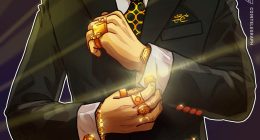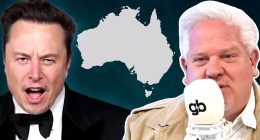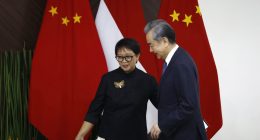
“No, no, no,” friends and family pleaded when Bob Wagner pondered whether to accept an offer from Hawaii head coach Larry Price to join the Rainbow Warriors as an assistant coach.
It was 1976, and the UH program was in flux as an independent, while Wagner was with a Washington staff that included future head coaches Jim Mora and Jim Lambright. Wagner accepted, Price left and coach Dick Tomey opted to retain the Ohio native.
Wagner coached a secondary featuring future NFL players Blane Gaison, Rich Miano and Mark Kafentzis; advanced to defensive coordinator with a double-eagle scheme that would become Arizona’s top-rated “Desert Swarm,” and then became one of the most successful head coaches in UH football history.
“He loved Hawaii,” said Duane Akina, a senior defensive assistant with Arizona.
Wagner died on Tuesday night on Hawaii island. He was 76.
“We are heartbroken to share that former University of Hawaii Head Football Coach Bob ‘Wags’ Wagner has passed away after battling recent health challenge,” the family said in a statement. “Our loving husband and father touched many lives throughout Hawaii and will be dearly missed by all who knew him.”
Kenny Niumatalolo, a Radford High and UH graduate who played and coached under Wagner before launching a prosperous career as Navy’s head coach, was overcome with emotion when he learned of his mentor’s passing.
“We lost a great man in Coach Wags,” Niumatalolo said. “But his influence lives on in all the people he touched and influenced. All the brothers that came to UH during his tenure were blessed to have him as a coach. I will be forever grateful to Coach Wags. He blessed me and my family and changed our lives forever.”
Wagner’s 58-49 record in nine seasons through 1995 ranks second to June Jones among UH head coaches competing in an all-NCAA schedule.
When Wagner was hired as head coach, he wanted an offense that could confound bigger defenses. His choice for offensive coordinator was Paul Johnson, 29, who did not play college football. But at Georgia Southern, Johnson learned the triple-option offense. He then moved two backs into the slots, creating a hybrid that was part run-and-shoot, part triple-option spread.
The prolific attack, coupled with the double-eagle defense, helped the Rainbow Warriors end a drought against rival Brigham Young with routs in 1989 and 1990. The afternoon of the 1990 regular-season finale, BYU quarterback Ty Detmer was named the Heisman Trophy winner. That night, the Warriors cruised to a 59-28 victory before a capacity crowd at Aloha Stadium. After one of the UH touchdowns, slotback Jeff Sydner struck a Heisman pose in the end zone.
“He was an island in the middle of the sea for me,” Sydner said of his fellow Ohioan. “I took a long shot to come out there. He was a rock I could always go to. Me and Coach had a lot of personal conversations, father-son type of conversations. He was an important figure for me. What came out of his mouth meant a lot.”
The Warriors went 11-2 in 1992, punctuated with a 27-17 upset of Illinois in the Holiday Bowl in San Diego. The Warriors finished the year ranked in the Top 20 for the first time in the program’s history.
“The job is extremely difficult,” said Victor Santa Cruz, a linebacker on the 1992 team. “But for Bob Wagner to provide the leadership to give us our first championship and our first mainland bowl win, that’s impressive.”
Wagner was the Western Athletic Conference’s Coach of the Year in 1989 and 1992.
Wagner remained true to his humble Midwestern roots. Sharing a field with a golf class, before each football practice, Wagner would retrieve golf balls and pat down divots. Ben Yee, a volunteer with a toothpick in his mouth and a movie camera on his right shoulder, would provide ground-level footage to be reviewed during film sessions.
“His coaching style was never demeaning, it was always encouraging,” former UH receiver/returner Matthew Harding said. “What was funny about it was his frustration sometimes. (The players) would laugh because he would get frustrated at the smallest things. Yet, the small things made the biggest differences.”
Wagner also had an appreciative sense of humor. “He said I should pay him residuals,” said former UH slotback John Veneri, who still does a spot-on impression of Wagner.
Wagner was instrumental in the creation of what is now known as the Alexander C. Waterhouse Physiology Research &Training Facility on UH’s Lower Campus. Wagner also was a key leader in developing Na Koa Football Club. His book, “Getting the Edge: Hawaii Football by Bob Wagner” offered suggestions that led to UH selling priority seats and providing bonuses to coaches for working a bowl game. Wagner donated camp money and appearance fees from his coach’s show to underpaid assistant coaches.
But UH’s success in 1992 spurred other programs, such as Utah and New Mexico, to invest heavily in facilities and football budgets. In turn, UH tightened academic requirements, denying partial qualifiers. In 1995, despite assurances from athletic director Hugh Yoshida of being allowed to return in 1996, Wagner was dismissed with a game remaining in what would be a 4-8 season. Declining attendance was cited, despite the Warriors averaging 35,347 per home game.
Two days after the announced dismissal, Wagner spoke at a news conference — a session that became heated when basketball coach Riley Wallace blasted the firing. Wagner was allowed to coach the regular-season finale, after which he joined the seniors in a farewell walk around the Aloha Stadium field.
In the 2014 UH Social Science Research Institute’s oral history project, former UH president Kenneth Mortimer apologized for the way the school handled Wagner’s dismissal.
“I don’t think it was handled well,” Mortimer was quoted as saying. “Bob was embarrassed, and that was not necessary. I saw him a few years later and I told him that. I just am embarrassed for Bob (that) the university treated Bob that way.”
News of Wagner’s passing evoked shock and sadness. Several members of the 1992 team learned of the death in a group text.
“Hawaii is losing one of the greatest coaches to coach here,” former UH assistant coach Kanani Souza said. “He loved Hawaii. He loved coaching. I’m really taken aback. He was more than a boss. He was a dear friend, a special friend. He was one of the best people.”
Niumatalolo said his ascension in the coaching ranks is traced to Wagner’s offer of a graduate-assistant position and then a full-time coaching job at UH. A few years ago, with his daughter working on the East Coast, Wagner was invited to attend Navy’s practices.
“It meant so much to me to see him sitting there on his fold-out chair, taking notes,” Niumatalolo said. “He always had a suggestion. I took it to heart because he knew what he was talking about.”
The coach who was warned about the UH job met his wife in Hawaii. He participated in the Big Brother program before the couple’s only child was born here. For 10 years, he also was athletic director for Kamehameha Schools’ Hawaii campus. “A lot of good memories,” former UH quarterback Michael Carter said. “It’s very sad.”
Read More: World News | Entertainment News | Celeb News
Star








